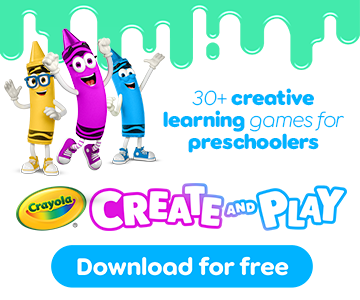In the New York Times bestseller, The Five Love Languages of Children, there are five main categories or languages in which children give and receive love. Do you know which one is your child’s love language?
If I told you my husband brought a freshly brewed cup of coffee to me in bed every morning, you would probably think he was a sweetheart. You may even be jealous. But I would roll my eyes and complain — surely he should know after all these years that I don’t like coffee! (If it was a cup of tea, I’d think he was the most wonderful person in the world.)
What is intended as a loving action might not be perceived as such. Why? Because there can be a chasm between the intent behind an action, and how it is received. We need love to be tailored to us uniquely, in order to feel loved. Essentially, it’s a confirmation that we are known, listened to and validated in our personality and preferences.
How to discover your child’s love language
Love makes the world go round
Queensland psychologist Dr Jacqueline Boon says being nurtured in love teaches the capacity to love, and is important to aid a young child’s healthy development.
“Skin-to-skin contact between mother and child is essential for brain neurons to connect with other neurons and form important long-lasting pathways, creating a neurological code of love,” Dr Boon says. “This, as well as maternal responsiveness can lead to self-confidence and self-reliance in later childhood years. A strong parent-child connection is considered essential for optimal brain development.”
Love is crucial not only to your child’s internal physical and emotional development, but also to their external development; helping them to learn empathy and compassion for others.
“There is a saying, ‘how we treat the child, the child will treat the world’. By treating children lovingly, they in turn will learn to love themselves and others,” Dr Boon says.
How can you tell if you are meeting your child’s need for love?
“Increasingly uncooperative behaviour, without any known trigger, could be a form of communication from a child that their needs for attention or connectivity or love are presently unmet,” Dr Boon says.
Loving your child
The common response from parents I spoke to is that we don’t appreciate how straightforward the young years are while our children are in them. Those with primary school aged children say meeting the emotional needs of babies or toddlers is easy. While parents of teenagers argue that meeting the emotional needs of primary school aged children is easy, in comparison to the complex needs of teenagers.
As children grow and develop their individual personalities and temperaments, meeting their emotional needs becomes trickier for parents.
Have you noticed that children respond differently to the same expression of love? One child might adore cuddles, while another recoils from affection. Or perhaps the child who once enjoyed cuddles, is now less interested in them? We need to observe and listen to our children, in order to meet their individual needs for love effectively.
The theory behind love languages
According to doctors Gary Chapman and Ross Campbell, the authors of the New York Times bestseller, The Five Love Languages of Children, there are five main categories or languages in which we all (not just children) give and receive love. Physical touch, words of affirmation, giving and receiving gifts, acts of service, and quality time.
While we might think we like all of these, there is usually one or two that speak love more tenderly to us. (One friend’s husband thinks there should be a sixth category: acts of silence, to be expressed lovingly while the football is on.)
The theory is: If we do not understand someone’s primary love language, it is difficult to express love to them in a meaningful way.
The love languages
It might be fun and beneficial to first work out your own preferred love language. Have a look at the list and see which you’re most responsive to.
- Quality time: You don’t mind what activity you do, just as long as you’re together. Undivided attention makes you feel well-connected and loved.
- Physical touch: You’re tactile by nature. You enjoy giving and receiving cuddles, kisses and maybe even a massage. Physical touch speaks love to you.
- Gifts: To know someone has been paying attention to your interests and puts thought into buying you the perfect gift fills your emotional tank. You also take great satisfaction in finding the perfect gift for your loved ones.
- Acts of service: If someone goes out of their way to do something for you, you feel loved and appreciated. You also show love to others by doing something thoughtful for them. Actions speak louder than words for you.
- Affirmation: You value communication. For you, words speak louder than actions. You like to hear and say the words, ‘I love you’. Your emotional tank is filled by sincere compliments and expressions of appreciation.
It makes for interesting conversation to discuss the love languages with your partner. Sometimes it can be hard to immediately place yourselves or each other. It can also be hard to appreciate someone else’s love language, if it is one we could take or leave ourselves.
“Initially, I thought my husband’s love language of gifts was immature,” Leanne says. “But when I consider his mother is the most exquisite gift-giver; it makes sense that he would consider a well thought out gift an expression of love. He could take or leave the card, whereas I could take or leave the gift. My husband has pinned me down to ‘words of affirmation expressed in written, poetic form’—a tall order for a male to fill!”
Once you have worked out which love language you prefer, what about your children—how do you decipher their love language, if they’re not self-aware enough to tell you?
The clue to finding a child’s love language
The clue is in the way they express love to you. We treat others the way we like to be treated.
Mother of three, Isobelle, says she notices one of her children is very tactile.
“She blossoms with cuddles and often snuggles up to me,” Isobelle says. “Another just likes to have me all to herself for a while, asking if I can read to her on her own. My other child likes to be affirmed; I know this because he keeps asking me, ‘Do you like what I did? I’ve been good, haven’t I? Watch me!’ He’s fishing for affirmation. I try to show love to my children by imitating the way they show love to me, and initiating it with them.”
The universal kids’ language
Dr Boon says play is the universal language of children, and that “communicating our love, laughing together and being playful” are very powerful ways of connecting and meeting little one’s needs for love.
“Physically active play meets a child’s need for attention, for touch and deep connection,” She says. This is especially the case for boys, whose rumbling is a form of affection.
As for teenagers and love
According to Shaunti Feldhahn and Lisa Rice in their research-driven book, For Parents Only, the best way to meet a teen’s need for love is through listening. Give your teen the security of knowing you are making an effort to understand them and will be there for them regardless of their mistakes. Kids will emotionally shut out a parent they see as judgmental.
Feldhahn and Rice offer good news to parents of teens, “Our kids actually want to talk to us. The bad news is the reason they don’t—we are simply rotten listeners.”
For teens to feel loved, they need to feel heard. And to feel heard they need us to acknowledge what they are feeling rather than jumping in to fix their problem. This is partly due to their hormonally-charged state, but it cannot be dismissed as simply that. The teens surveyed strongly agreeon their list of don’ts for parents:
- Don’t dismiss their feelings
- Avoid making up your mind before hearing them out
- Don’t be more concerned to make your point than hear them
- Enforcing rules should be secondary to developing or maintaining your relationship
- Don’t overreact—for good or bad.
It seems in their tumultuous emotional state, teens need to know their parents are emotionally stable and available for them.
Gender differences
Is there a difference between how boys and girls give and receive love?
Jane, mother of four, two boys and two girls, doesn’t think so.
“Both my boys and girls delight in showing love,” she says. “I feel that there are differences in the way love is given and received, but it’s not necessarily related to their gender, more to their individual characters and personalities.”
Never-ending love
It’s crucial to pay attention to those we love, particularly our children; to learn the best way to express our love to them individually.
“Across our lifespan, from infancy to old age, our hearts, minds and brains are sponges for love. As such our health, development and general well-being depend on receiving it,” Dr Boon says.
People are all different in so many ways; it makes sense to give and receive love uniquely. What’s important is that you appreciate these differences and communicate openly.
If my husband brings me a coffee in bed, I can either speak up, and say while I appreciate the gesture what I would really like is a cup of tea or, I can take the hint that he would appreciate a morning coffee in bed!
RELATED READS
Simple ways to reconnect with the kids
Can you achieve peaceful parenting?
Highly sensitive children: This is what you need to know
Servicing Brisbane, Gold Coast, Sunshine Coast and beyond, Kids on the Coast is an online guide for parents with kids events, attractions & things to do with kids, schools and education, school holiday guides, health & wellbeing for families, parenting and lifestyle news located on Gold Coast, Sunshine Coast & Brisbane, QLD.





